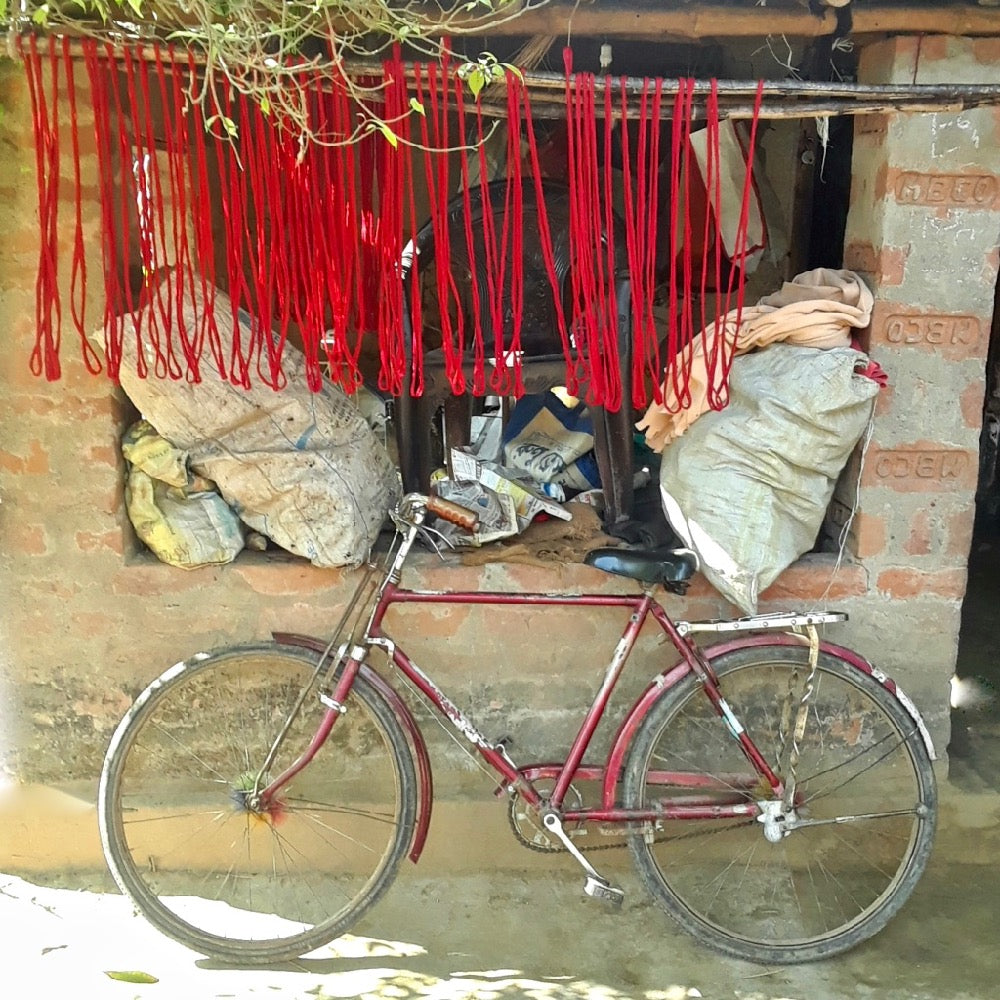First in a series of articles about how our Indian fabrics are made.

Deep in rural West Bengal, the winter landscape is a patchwork of bright yellow mustard fields and emerald paddies, dotted with clumps of palm trees. After driving for hours we reach our destination: a village where some of our fabric is woven. A duck strolls by as we pass the pond and walk up the lane, where hanks of thread hung out to dry offer a hint of what's to come. The clack of looms fills the air. We are eager to see some amazing handloom fabrics being made!

This is a weavers’ village, and many of the inhabitants are involved with cloth production in one way or another. It is a pleasant, tidy village: increased respect for what these men and women create has raised the standard of living for them and their families. Electrification gives them the freedom to work as they please without being dependent on daylight, which increases productivity. Their children can go to school.

In this area, traditional homes seem perfectly adapted for handicraft production: several small buildings are arranged around a courtyard, often with a tree standing in the middle. Some of these buildings are living quarters for various parts of the family, while others are work spaces such as weaving studios.

The studio might be an enclosed room, or partially open like a veranda, and often contains two or three looms where several family members or neighbors can work while the life of the household goes on in the courtyard. On the porch, women can spin cotton yarn or wind bobbins for the weaving shuttles in between their other domestic chores, such as cooking and childcare.

Different homes specialize in different aspects of the weaving process; one family might have the equipment for winding the warp threads, while another might specialize in warping the loom (above).
And looms are everywhere. Approaching each closed door, we can’t quite imagine what will be on the other side… but stepping through, we find ourselves in another shady courtyard with more looms, upon which yet more beautiful fabric is taking shape.
Each studio is an intriguing world of production. Hanks of yarn of different colors hang from the ceiling beams until they are needed; on top of the loom sits a sweater or shawl for chilly mornings. A pattern chart may hang at the weaver’s eye level if the fabric has a complicated design. Outside, yarn starched for warping is hung to dry.

It seems a timeless scene, perhaps, until you notice a mobile phone beside the weaver amongst the extra shuttles and reels of yarn.

Handloom weaving is an endangered art. In the past one often became a weaver because one was born into a weaving family; skills and traditions were passed down for generations. However, things are changing. Appreciative customers are increasing the demand for handwoven fabrics both in India and abroad, but weaving is hard work. Nowadays the weavers can send their children to school, and might encourage them not to become weavers in turn. Who knows what the future holds? But for now, when we buy and wear this fabric, we are contributing directly to the livelihoods and prosperity of these craftspeople and their families. Let us celebrate what they create.

Read the second article: A Look at Handloom Weaving
Read the third article: A Look at Jamdani Weaving
Watch a film: How Are Handloom Fabrics Made?

